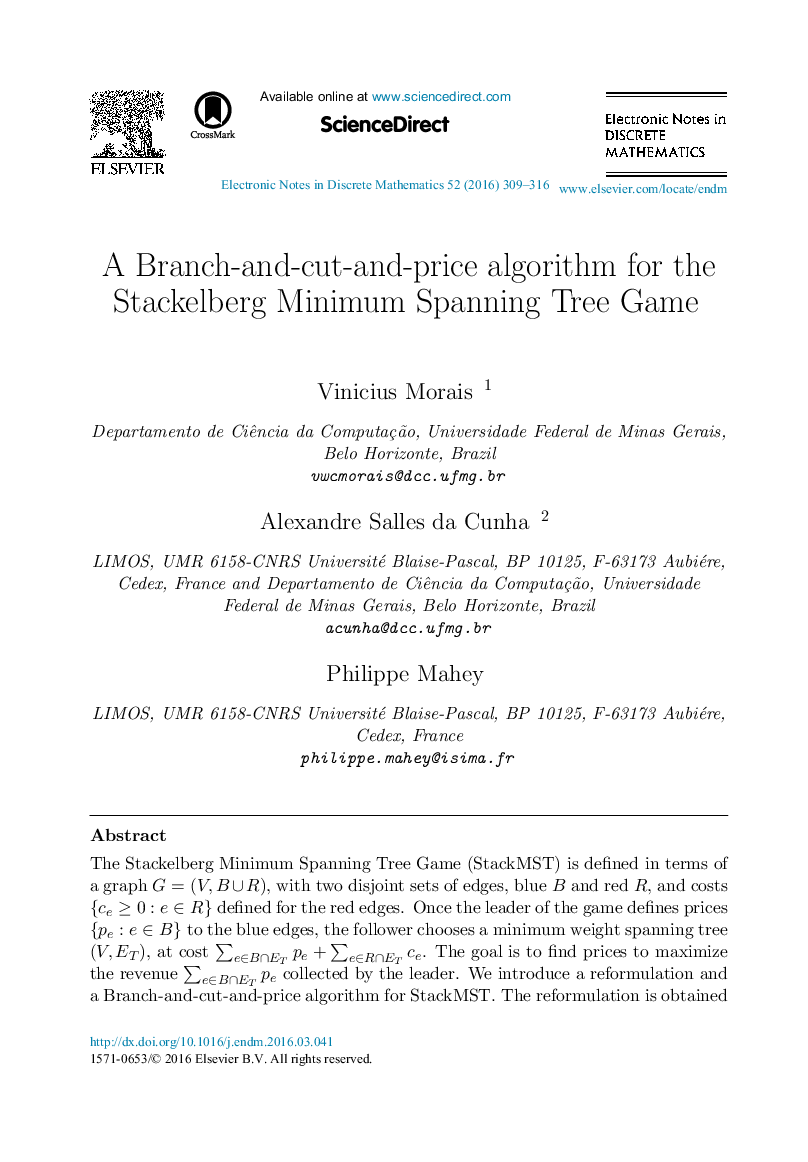| Article ID | Journal | Published Year | Pages | File Type |
|---|---|---|---|---|
| 4651605 | Electronic Notes in Discrete Mathematics | 2016 | 8 Pages |
The Stackelberg Minimum Spanning Tree Game (StackMST) is defined in terms of a graph G=(V,B∪R)G=(V,B∪R), with two disjoint sets of edges, blue B and red R , and costs {ce≥0:e∈R}{ce≥0:e∈R} defined for the red edges. Once the leader of the game defines prices {pe:e∈B}{pe:e∈B} to the blue edges, the follower chooses a minimum weight spanning tree (V,ET)(V,ET), at cost ∑e∈B∩ETpe+∑e∈R∩ETce∑e∈B∩ETpe+∑e∈R∩ETce. The goal is to find prices to maximize the revenue ∑e∈B∩ETpe∑e∈B∩ETpe collected by the leader. We introduce a reformulation and a Branch-and-cut-and-price algorithm for StackMST. The reformulation is obtained after applying KKT optimality conditions to a StackMST non-compact Bilevel Linear Programming formulation and is strengthened with a partial rank-1 RLT and with valid inequalities from the literature. We also implemented a Branch-and-cut algorithm for an extended formulation derived from another in the literature. A preliminary computational study comparing both methods is also presented.
